Magnetism
Storyboard
Outside the electric fields there is a second type of field in electromagnetism, which is the magnetic fields. These are for example generated by magnets outside of being able to be originated by electric currents through the phenomenon we call induction. The magnetic fields have two poles that are called north (N) and south (S) existing in a similar way to the electric field line fields that go from the north pole to the south. Unlike the case of electric charges, the poles cannot exist separately. If you try to divide a magnet in two by separating the north pole from the south, new poles arise at the new edges so that each magnet has a new north and south.
ID:(817, 0)
Magnet
Image
Magnets are materials that generate what we commonly refer to as magnetic fields and can influence the behavior of moving electric charges.
Magnets themselves have two "poles," typically referred to as "north" and "south," which can be identified using a simple compass whose needle aligns itself according to the Earth's magnetic field.

ID:(12110, 0)
Attracts objects
Image
The most well-known characteristic of magnets is their ability to attract certain materials. In the case of ferromagnetic materials (iron, cobalt, and nickel), their attraction ability is stronger, and there doesn't seem to be a preference for one pole over the other. In some cases, objects are attracted to both poles, forming a bridge between them.
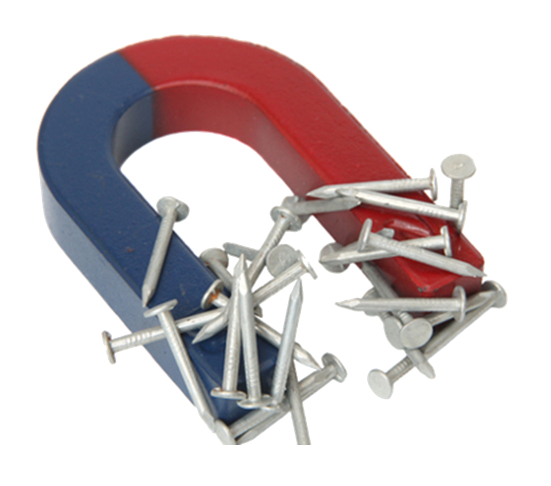
ID:(12111, 0)
Magnetize objects
Image
When some objects adhere to a magnet, and an attempt is made to lift the magnet while allowing gravity to counteract the attraction, it is observed that the adhered objects tend to attract others as well. Observing how this happens, it becomes evident that it occurs because the object closest to the magnet becomes magnetized itself and acts as a magnet.
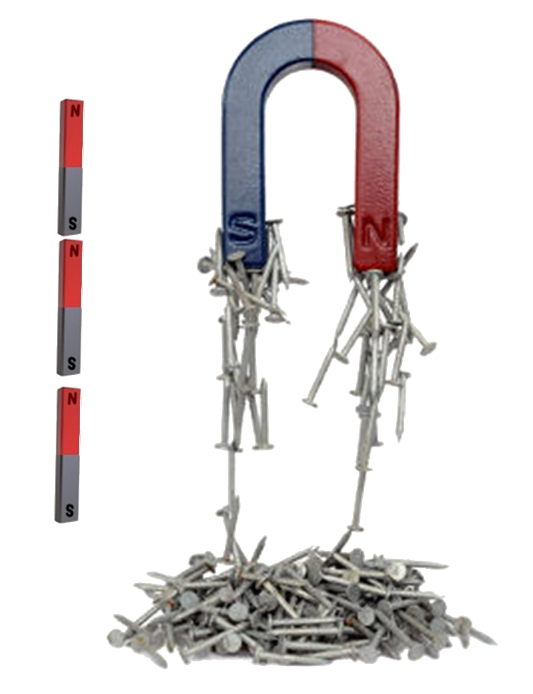
ID:(12112, 0)
Attracts and repels
Image
When two north poles or two south poles are brought close together, magnets repel each other. Conversely, when a north pole and a south pole are brought close together, they attract each other.
This behavior is similar to what is observed with electric charges, where opposite charges attract and like charges repel.
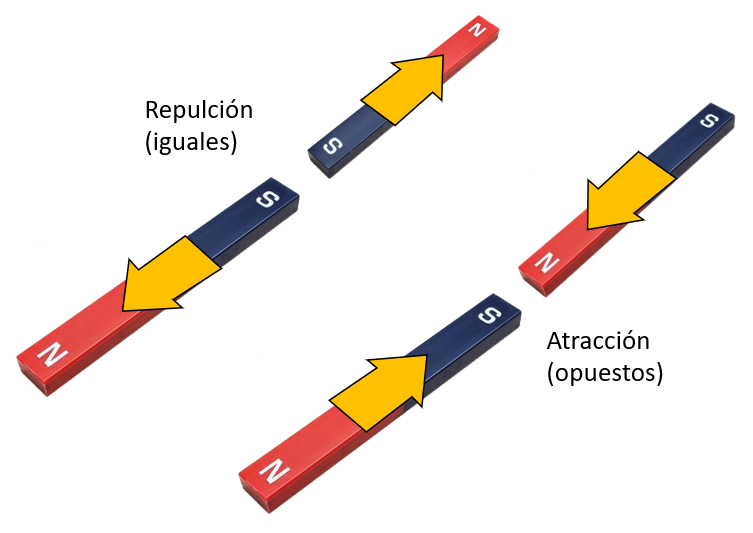
ID:(12113, 0)
Ferro-, para- and diamagnetism
Image
There are three types of magnetism. These are:
• Ferromagnetism: It is a material that, when magnetized, can retain a degree of magnetization even after being removed from the external magnetic field. The magnetization has a saturation level, meaning there is a maximum magnetic field it can achieve. However, it can lose magnetization if heated above a critical temperature known as the Curie temperature.
• Paramagnetism: It is a material that can be magnetized with the application of an external magnetic field, but it loses its magnetization as soon as the external magnetic field is removed. The orientation of magnetization is parallel and in the same direction as the external field.
• Diamagnetism: It is a material that behaves similarly to paramagnetism, but the polarization is in the opposite direction to the applied external magnetic field.
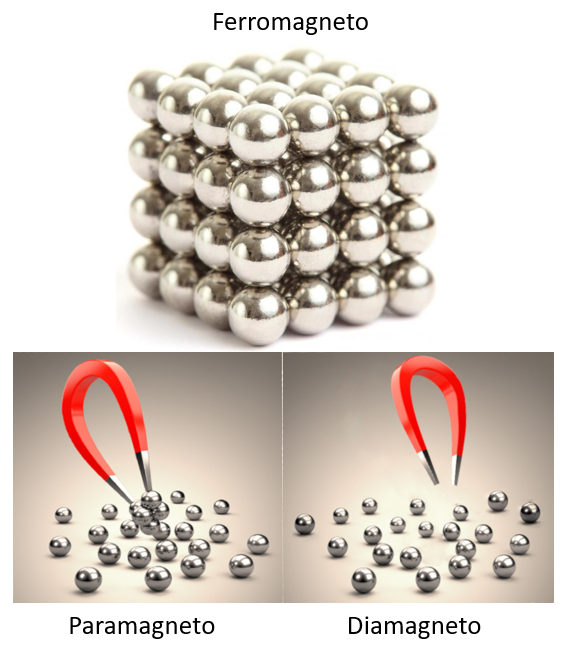
ID:(12114, 0)
Ferro, para and diamagnetic materials
Image
Every element can be classified as ferromagnetic, paramagnetic, or diamagnetic with varying levels of magnetization sensitivity. Elements that are ferromagnetic, paramagnetic, or diamagnetic can be identified based on their magnetic properties, and it's important to use the appropriate scales when working with these values.
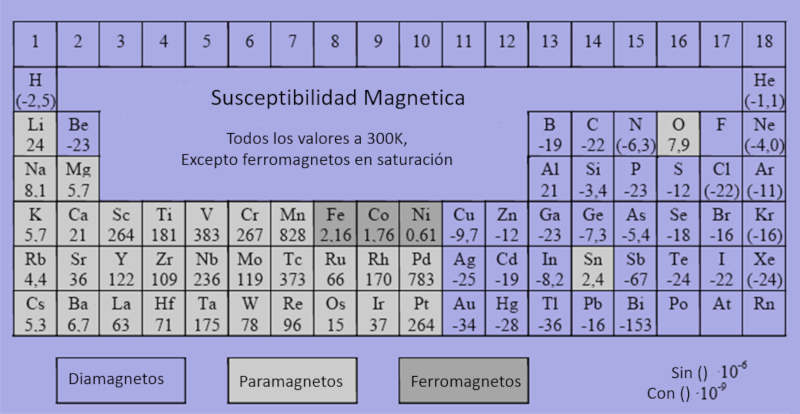
For general data on these classifications, additional resources can be consulted at: Datos.
ID:(12117, 0)
Magnetization
Image
Paramagnetism describes a behavior in which materials can be magnetized based on an applied external magnetic field. In this sense, they do not remain magnetized and lose this property as soon as the external field is removed.
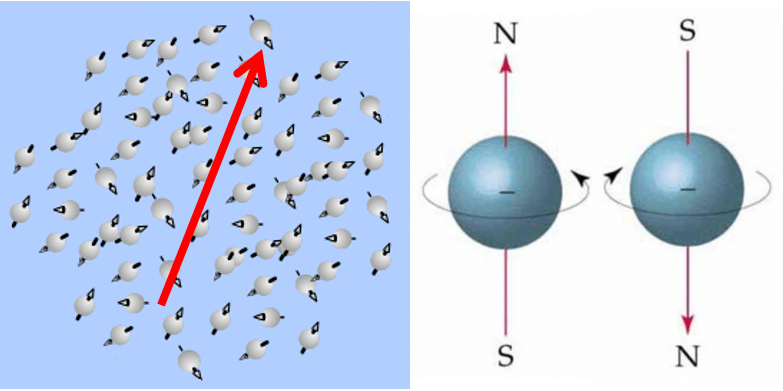
Materials with paramagnetic properties include magnesium, molybdenum, lithium, and tantalum.
ID:(12106, 0)
Paramagnet
Image
Paramagnetism describes a behavior in which materials can become magnetized in response to an applied external magnetic field, but they do not retain the magnetization when the external magnetic field is removed.
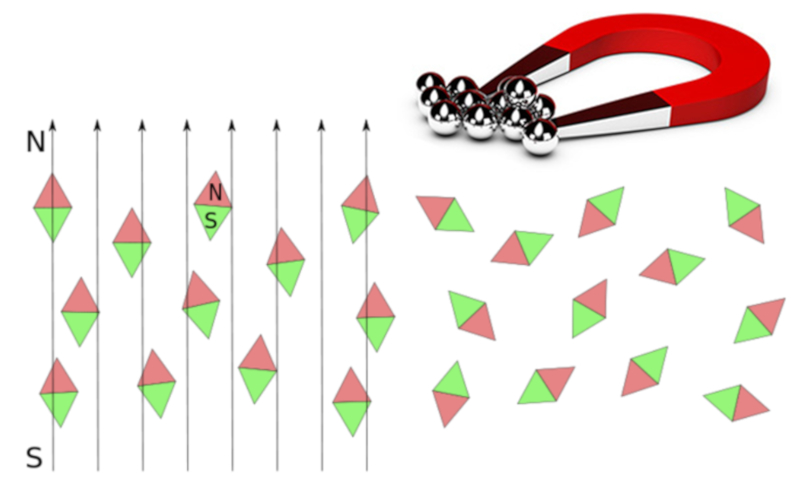
Paramagnetism originates from three types of magnetic moments:
• The magnetic moment of the nucleus (denoted as $\mu_n$)
• The magnetic moment of the electrons (denoted as $\mu_s$)
• The magnetic moment resulting from the motion of electrons in the orbitals (denoted as $\mu_l$)
The first of these magnetic moments is generally much smaller than the other two and is often negligible. The total magnetic moment of the electron ($S$) and orbital ($L$) magnetic moments can be calculated using the formula:
$\mu_{L+S}=\sqrt{4S(S+1)+L(L+1)}\mu_B$
where $\mu_B$ is the Bohr magneton.
ID:(12107, 0)
Planet like a giant magnet
Image
The planet has a magnetic field that is not static and can even change polarity. Its origin is believed to come from the movement (convection) of charges or conductive material around the inner core.
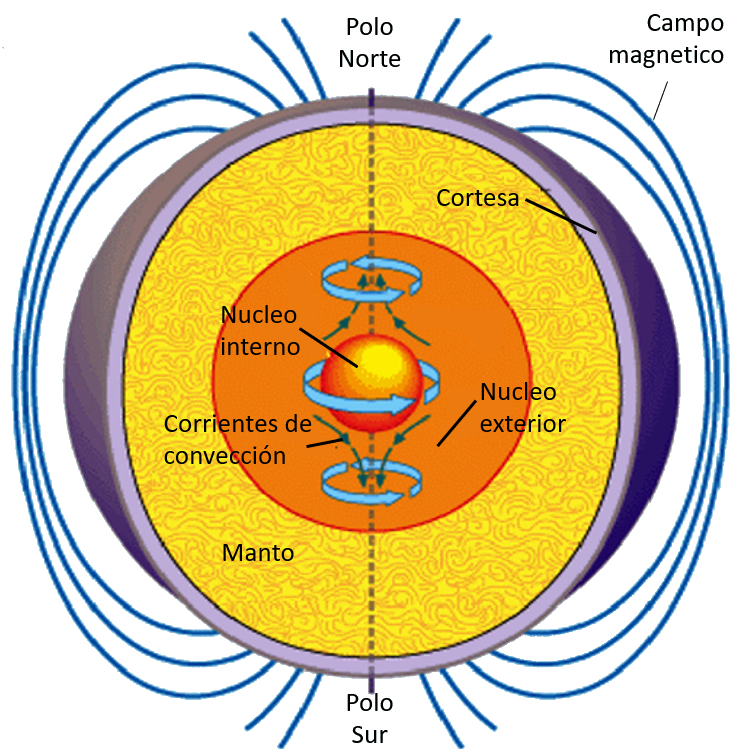
ID:(12118, 0)
Protection from solar wind and cosmic radiation
Image
The Earth's magnetic field is crucial for protecting us from solar wind and cosmic particles. A significant portion is redirected, while a few manage to penetrate the shield through the poles.
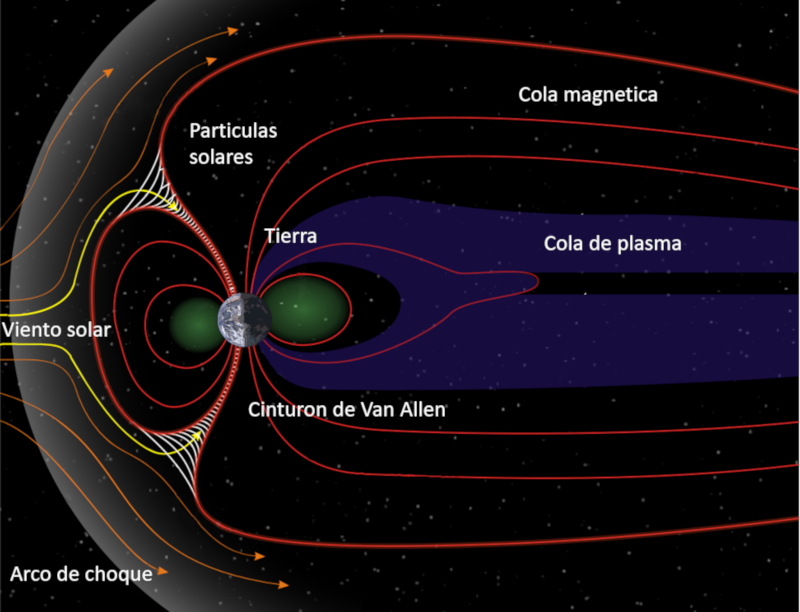
ID:(12119, 0)
Impossibility of magnetic monopoles
Image
The similarity between magnetic and electric fields is limited to the fact that there are no what we could call a magnetic charge or an independent magnetic pole (monopole). This is because magnetic fields are formed by individual spins, and any attempt to separate the poles only results in the creation of a new magnet with its own two poles.
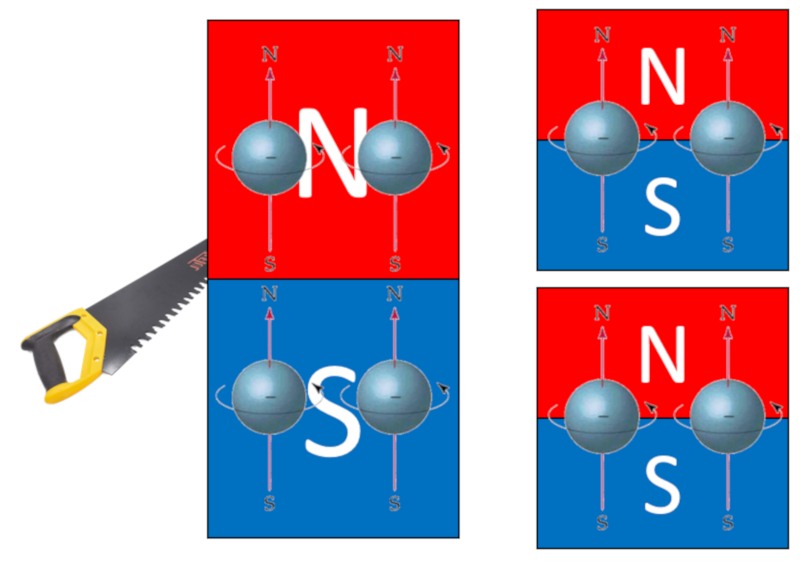
ID:(12120, 0)
Field lines
Image
When metal shavings are scattered around a magnet, they exhibit the following behaviors:
• They align themselves with the magnet as they become magnetized by its magnetic field.
• They tend to align in continuous lines due to interactions between them, forming north-south chains.
• They repel each other in certain areas, leading to the creation of regions without shavings.
Collectively, these metal shavings form patterns that are analogous to the field lines of electric charges in terms of their behavior and arrangement.
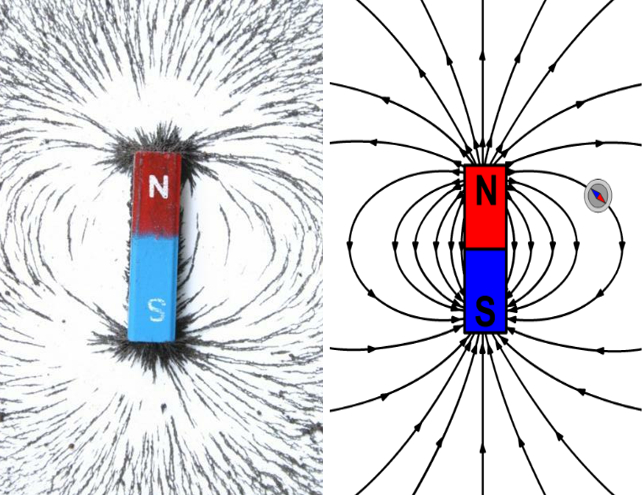
ID:(12115, 0)
Ferromagnet or solenoid
Image
When current is allowed to flow through a solenoid, we observe that it creates a magnetic field similar to that of a magnetized bar. This indicates that the flow of electrons is capable of generating magnetic fields, and these fields are equivalent to permanent magnetic fields.
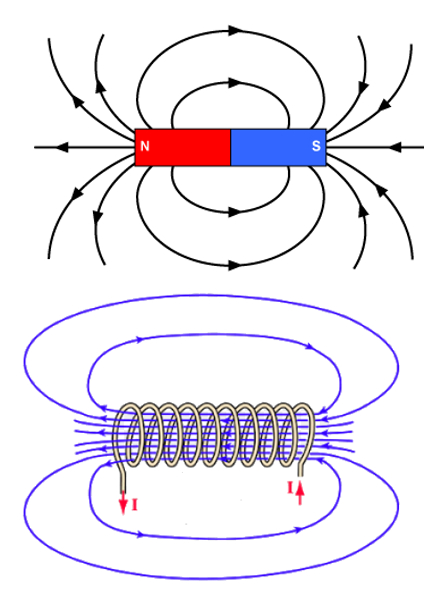
ID:(12116, 0)
Interacción imán y solenoide
Image
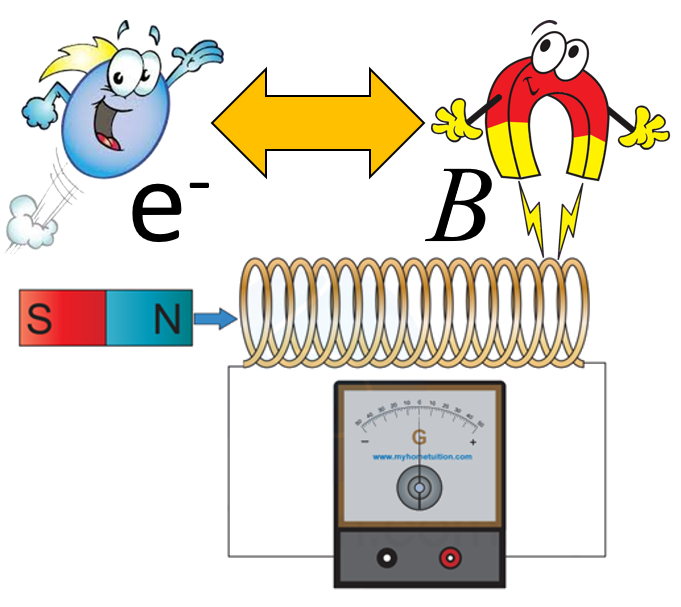
ID:(12121, 0)
